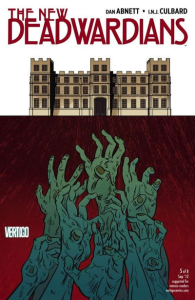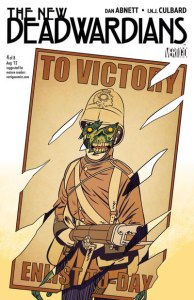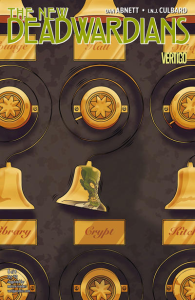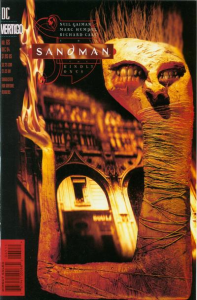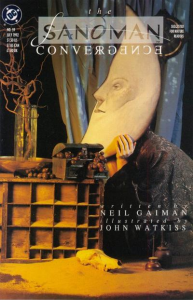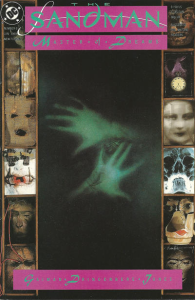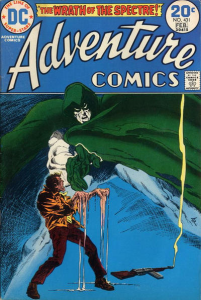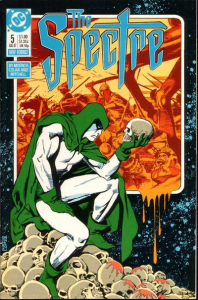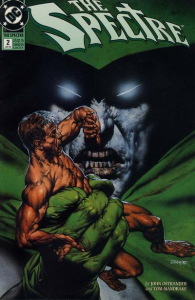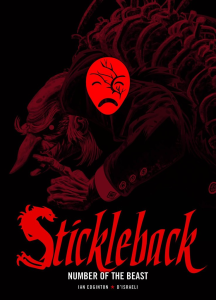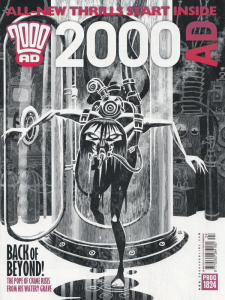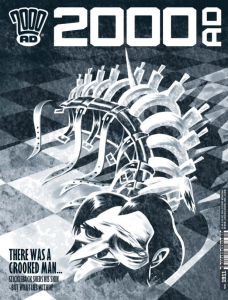If you read the last post, you know what’s going on. Here are some more comics that are gothic as hell and definitely worth checking out:
THE NEW DEADWARDIANS
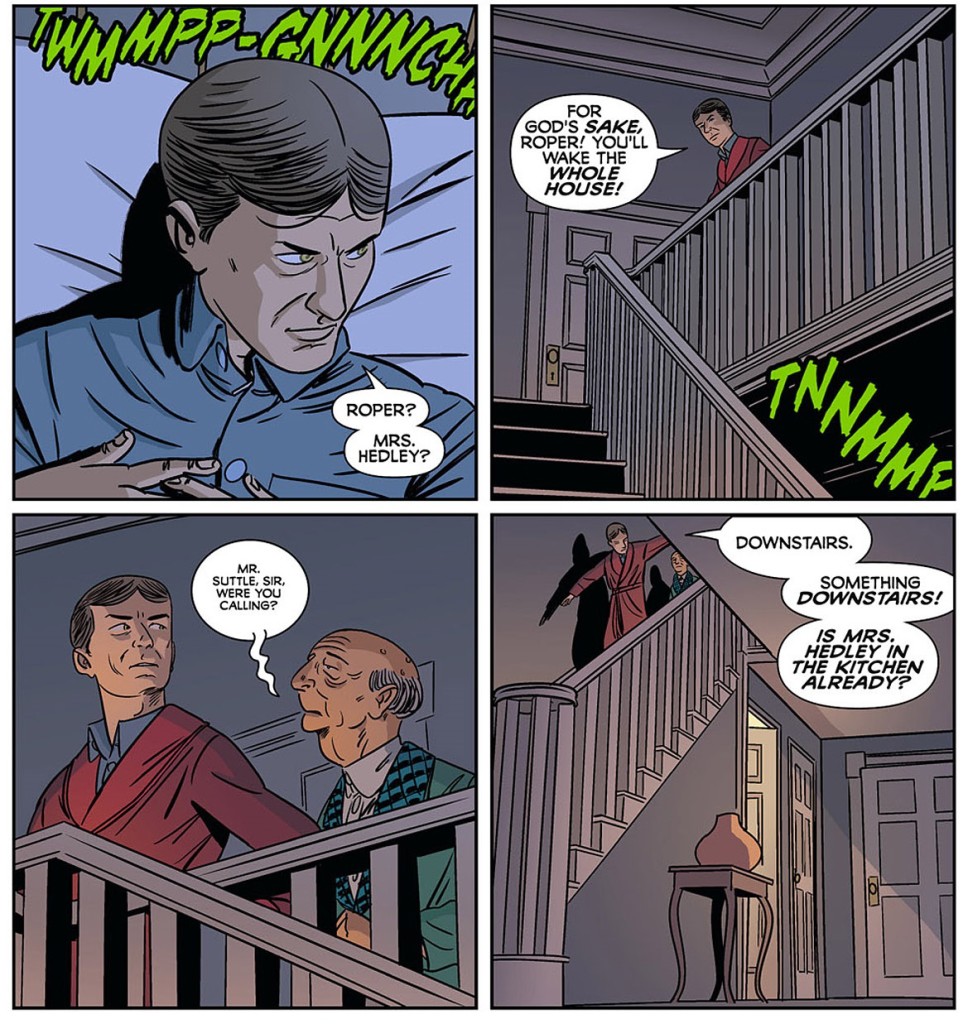
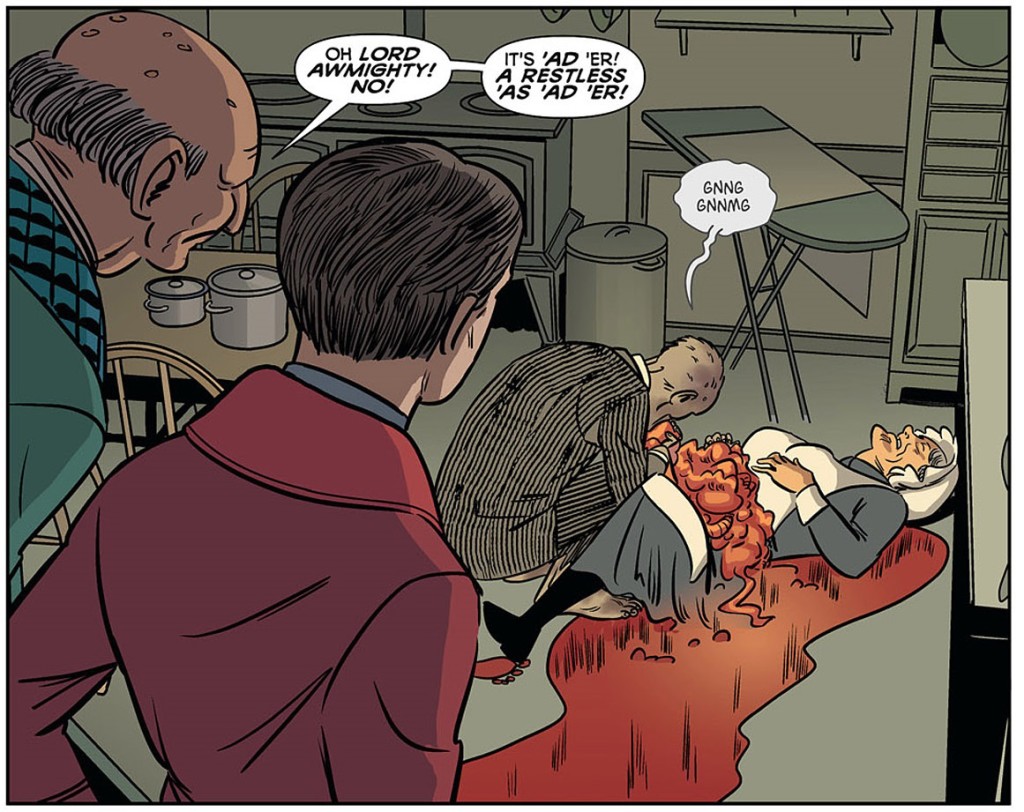 The New Deadwardians #1
The New Deadwardians #1
Set in an alternative 1910, this wonderful mini-series is one of those works that plays with horror tropes like zombies (the ‘restless’) and vampires (the ‘young’) yet it’s much less interested in cheap thrills than in fusing myth with historical fiction. In this version of post-Victorian England, the elites have managed to manipulate vampirism while the masses desperately struggle to survive among a zombie epidemic. Yes, like most British fiction, underneath all the ghastliness The New Deadwardians is essentially about class relations, but it’s also an ingenious commentary on the implications of mortality.
You can add a murder mystery to the genre mash-up – a particularly devilish one, since it concerns the murder of an undead person. Whodunits, of course, are a proven method for effectively guiding readers through the different social areas of an alternate History setting, as seen in excellent novels like Robert Harris’ Fatherland, Michael Chabon’s The Yiddish Policemen’s Union, and Mike Carey’s The Devil You Know (which is also set in a zombified London). In fact, more than a macabre parable, I would argue that The New Deadwardians is above all an imaginative and highly entertaining exercise in speculative world-building.
What a skillfully made comic! Dan Abnett eases us into this fascinating world by gradually (and wittily) conveying its slang and rules while avoiding obvious infodumps. I.N.J. Culbard’s art is stylish, clear, and evocative of the era – and the same goes for Travis Lanham’s lettering. Meanwhile, Patricia Mulvihill proves once again that she is one of the greatest colorists in the field.
THE SANDMAN
 The Sandman #4
The Sandman #4
One of the most acclaimed comic series ever, The Sandman carved out its place at a peculiar intersection between the DC Universe, goth subculture, and Shakespearean lyricism… Nominally focused on Morpheus, the Lord of Dreams, the series was almost an anthology allowing Neil Gaiman to tell unbelievably diverse tales related to the concept of ‘dream’ (and to the power of storytelling) in various cultures and historical contexts. Just look at how different the two most famous issues are… ‘The Sound of Her Wings’ is just one long, quirky, and somewhat philosophical conversation between Morpheus and his sister, Death (who in this incarnation is a sexy goth chick), as she lightheartedly goes about her deadly business. By contrast, ‘A Midsummer’s Night Dream’ revolves around the 16th century premiere of William Shakespeare’s eponymous play, performed before actual fairies! What’s more, although Gaiman eventually pulled all the threads together and made them fit into a textured, overarching narrative, many of the most superb issues (‘Men of Good Fortune,’ ‘A Dream of a Thousand Cats,’ ‘August,’ ‘Ramadan’) largely work as self-contained stories in their own right.
Neil Gaiman’s writing can be smart and poetic and sometimes downright pretentious, but while his literary affectations are what raised The Sandman above the crowd, there is also a ‘hip horror’ dimension to it, humorously contrasting arcane myths with the cynical modern world (like in ‘Vampirology,’ the best episode of the cult TV series Urban Gothic). As much as The Sandman tends to be praised more for its epic, oneiric adventures as well as for the smaller-scale, magic realism-tinged human dramas, a lot of it was proudly grim and shocking, including a fair amount of gore and even an unforgettable issue about a convention of serial killers. In fact, this mix set the tone for much of what was published in the first years of the Vertigo imprint.
Another aspect which is often understated is how much the series is steeped in DC continuity. Sure, this is more blatant in the early issues, which feature appearances by the likes of John Constantine, the demon Etrigan, Doctor Destiny, Mister Miracle, and the Martian Manhunter (you can even glimpse Batman in issue #2), but the references are there, in every book, until the very end, they just become subtler along the way. The thing is that, for the most part, it does work both ways – for example, you don’t have to know Morpheus’ raven used to be a supporting character in Swamp Thing in order to follow the plot, but if you do you gain an extra layer of enjoyment! What I find so cool about The Sandman is precisely how Gaiman puts all mythologies at the same level, whether biblical, pagan, or superhero-y. This pays off beautifully in the magnificent ‘Season of Mists’ storyline, where Lucifer quits and gives Morpheus the key to Hell, leading to diplomatic negotiations between all kinds of gods and creatures from various pantheons.
Of course Gaiman doesn’t deserve all the credit. Visionary editor Karen Berger is responsible for more sophisticated comics than anyone else in the industry. A veritable who’s who of renowned illustrators contributed to the series, the names changing to fit each arc’s specific mood. Letterer extraordinaire Todd Klein gave each of the main characters a distinctive font, reflecting their personalities. Groundbreaking artist Dave McKean provided covers that were unlike anything else in the market at the time:
The Sandman is pretty amazing on its own, but if you add it to the first couple of Swamp Thing series, the original Hellblazer, and the brilliant Lucifer spin-off written by Mike Carey, you’ll get a true literary masterpiece – over 15,000 pages of what is arguably the greatest dark fantasy meta-narrative ever told, in any media.
The Dreaming spin-off wasn’t as impressive, despite a few solid stories (‘His Brother’s Keeper,’ ‘Day’s Work, Night’s Rest,’ ‘The Dark Rose,’ ‘Coyote’s Kiss’), but if you’re feeling generous you can add to the list neat mini-series like Love Street, Petrefax, The Furies, Witchcraft, and Witchcraft: La Terreur, not to mention the two Death minis written by Gaiman himself. With a fun, balls-to-the-wall attitude, Lady Constantine, Taller Tales, and Thessaly: Witch for Hire are set in the same corner of the Vertigo world as well. As for Sandman Mystery Theatre, while also connected, I would argue that it shouldn’t make the cut because the tone is just too removed (it’s a realistic mystery series set in the 1930s with good character work and an eye for the period, albeit with very weak mysteries…).
THE SPECTRE
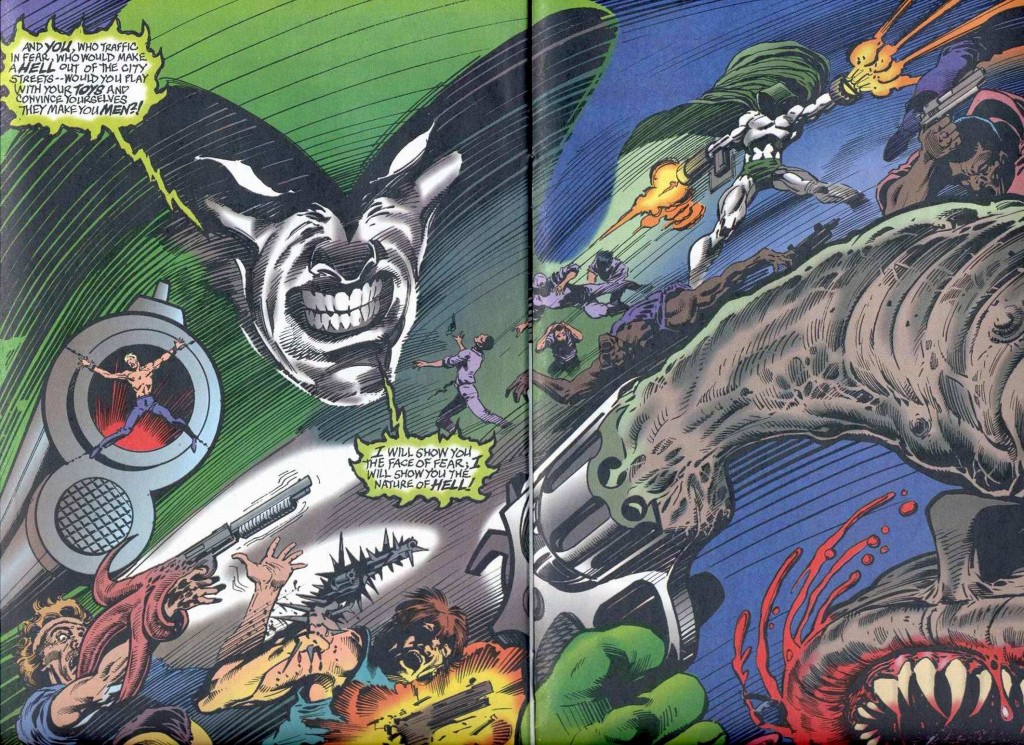 The Spectre (v3) #6
The Spectre (v3) #6
Even by DC standards, the Spectre’s origin (created by Jerry Siegel and Bernard Baily) is notoriously bleak. In 1940, gangsters shoved NYPD Detective Jim Corrigan into a barrel, encased him in concrete, and threw him into the river. Instead of letting him move on to the afterlife, however, God sent Corrigan back as a spirit of vengeance, i.e. a ghostly cop on a mission to liquidate evil-doers.
One of the draws of the character are the grisly and often ironic punishments he dispenses. Michael Fleisher and Jim Aparo (closely edited by Joe Orlando) went nuts with this in a legendary run on Adventure Comics (later collected as Wrath of the Spectre), where the Spectre melted a crook alive like a piece of wax and cut up another one with a pair of giant scissors before turning his accomplice into a pile of sand, among other gruesome spells.
A wordy, convoluted series in the late eighties went in a different direction, drawing horror from more esoteric lore in the form of demons and sorcery. Writer Doug Moench drastically depowered the Spectre (an aftermath of Crisis on Infinite Earths) and made him a separate, if bonded, entity from Jim Corrigan, who was now a hardboiled private investigator who said things like ‘If only every gumball were a mystery solved by teeth.’
In their long run in the 1990s (a comic you should own if there ever was one), John Ostrander and Tom Mandrake explained away Moench’s series and just ran with the notion that the Spectre was an all-powerful bastard again – in fact, he was the embodiment of the wrath of God. This allowed Mandrake to come up with all kinds of inventive and horrific visuals (dazzlingly lettered by Todd Klein). Meanwhile, Ostrander confronted the Spectre with moral dilemmas about the nature of Evil, including hot topics such as AIDS, women’s oppression, and homophobia, plus DC’s version of the Yugoslav Wars and the Arab-Israeli conflict. The series grew into a fantastical, theological odyssey, complete with provocative quotations at the beginning of each issue. Ostrander also nailed the tough cop personality of Jim Corrigan, whom he sent on a spiritual journey, literally searching for God, and then allowed to move on in a beautiful ending that finally provided closure to the character (which of course did not prevent DC from repeatedly attempting to revive the property in all kinds of weird ways).
Ostrander’s and Mandrake’s tremendous Spectre series stood on the border between Vertigo and the DC Universe. On the one hand, this was a very dark comic and it featured several cameos by characters associated with the Vertigo line at the time (the Spectre even fought the American Scream, from Shade, the Changing Man). On the other hand, the authors kept the series action-packed and were not afraid to engage in big superhero crossovers. Ostrander also brought back a number of faces from his previous titles, most notably the unorthodox priest Richard Craemer (formerly a supporting character in Suicide Squad).
I should point out that Batman and the Spectre have crossed paths numerous times, their contrasting methods and personalities making for some nice stories. My favorites: ‘Grasp of the Killer Cult’ (The Brave and the Bold #116) and ‘A Savage Innocence’ (The Spectre (v3) #51).
STICKLEBACK
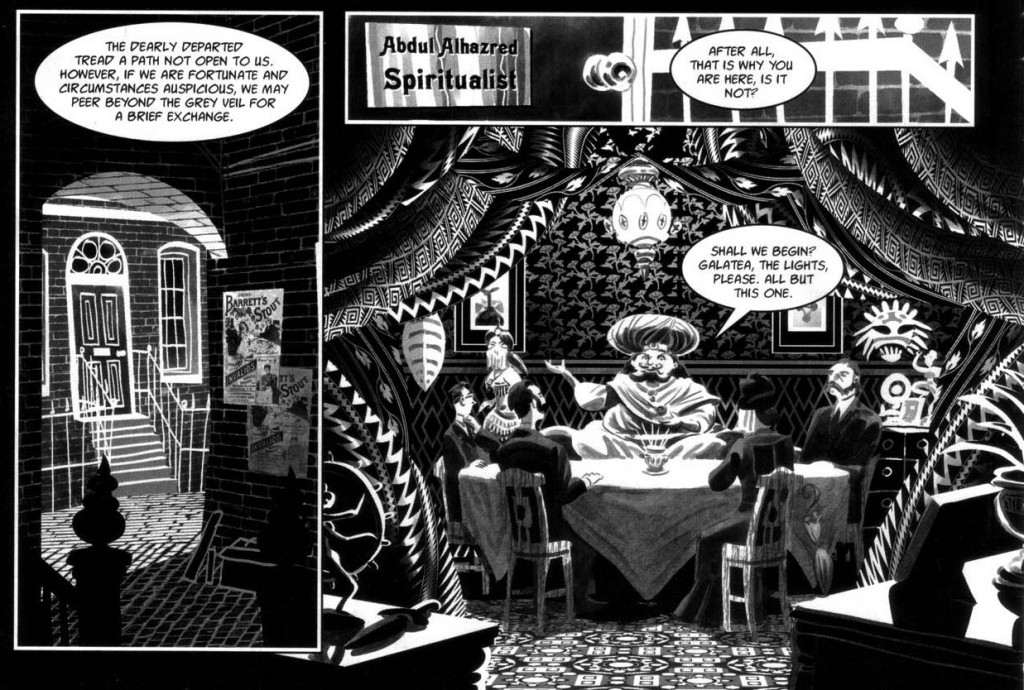
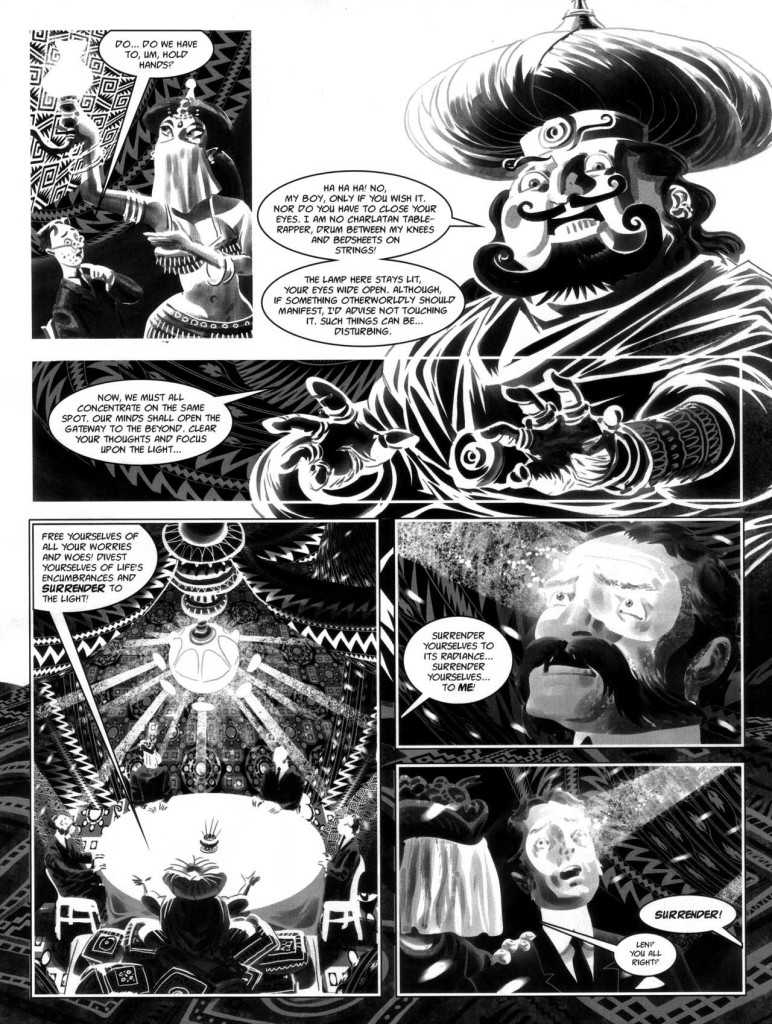
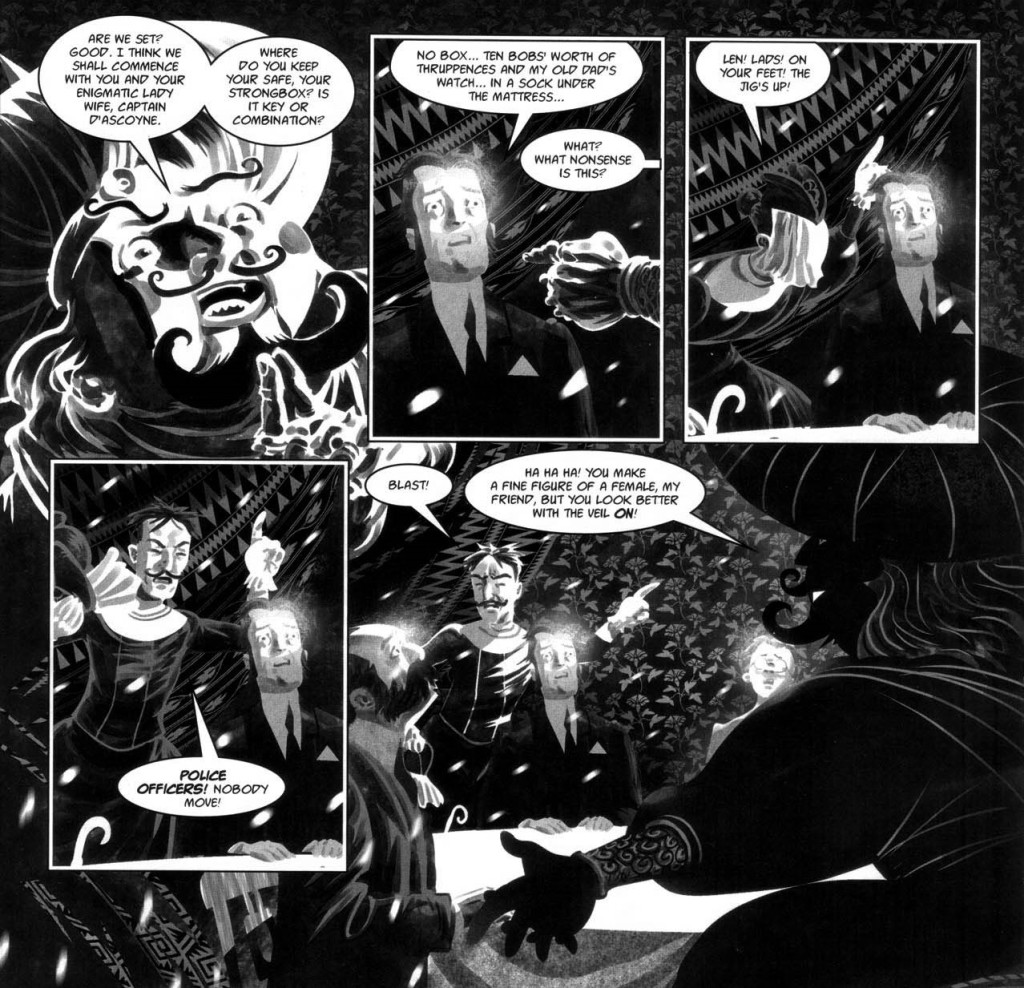 2000 AD #1517
2000 AD #1517
What if a Professor Moriarty-type master criminal was the hero of the story? Well, not so much the ‘hero’ as the sort of despicable, manipulative evil genius that’s shamefully fun to read about… and not even one of those charming rogues with a heart o’ gold, but a mean, ruthless, hunchbacked old geezer who can be as chilling as Papa Lazarou. And the more you read, the more you realize there may be something even more surprising hiding underneath his skin!
Set in a steam and clockpunk London at the turn of the 19th century, Stickleback is a rollicking ride of supernatural mayhem. As the intro to the second collection puts it: ‘Herein there are frights, phantasms and fantastiques aplenty. Good does not always triumph, crime often pays and the evil that men do may perversely prove to be the salvation of us all.’ For all the horridness and grotesquerie, though, it’s quite an enjoyable read, as each page is chockfull of wit and hidden background references.
Masterly written by Ian Edginton, Stickleback takes place in the same reality as Edginton’s splendid pirate comic The Red Seas and it’s just as imaginative in the way it mercilessly puts a twist on familiar archetypes. (And yes, Edginton basically remade the scene above in the first issue of his Sherlock Holmes vs Zombies series, Victorian Undead.)
However, it’s the stunning art that truly elevates the comic. Not only does D’Israeli come up with maniacally flamboyant designs, he draws the whole thing in a high contrast style with nifty use of negative space reminiscent of woodblock printing.
NEXT: Even more gothic comics.

